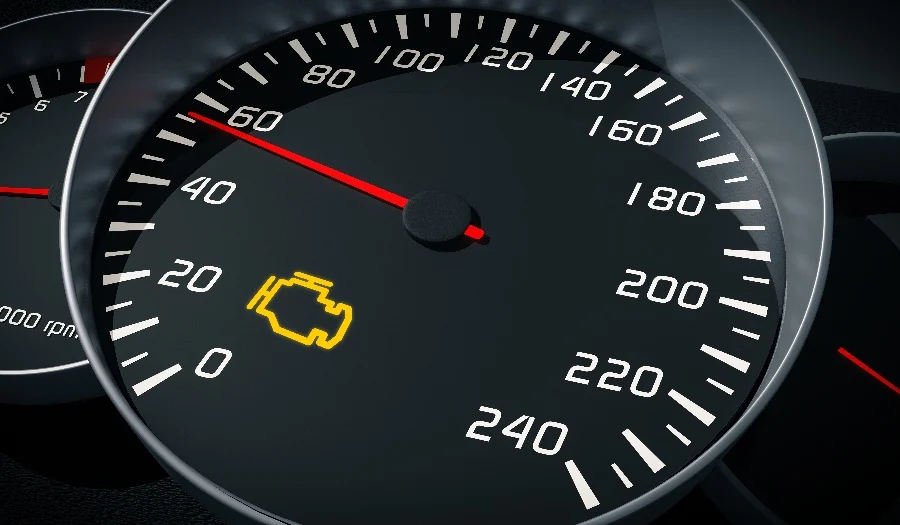Seeing your check engine light (CEL) come on can be stressful, but it doesn’t always mean a major repair is needed. Your car’s onboard diagnostics system (OBD-II) detects issues in your engine, emissions, or electrical systems, triggering the warning light.
This guide explains common reasons your check engine light is on, the most frequent OBD-II codes, and what to do next to avoid costly repairs.
1️⃣ What Does the Check Engine Light Mean?
The check engine light can appear in two ways:
✔ Steady Light: A non-urgent issue that still needs diagnosis.
🚨 Flashing Light: A serious problem (like engine misfire) that requires immediate attention.
Ignoring the CEL can lead to poor performance, reduced fuel efficiency, and engine damage.
2️⃣ Common Reasons Your Check Engine Light is On
🔍 Here are the most common causes:
1. Loose or Faulty Gas Cap
🛠 Why It Happens: A loose or damaged gas cap allows fuel vapors to escape, triggering the CEL.
✅ Fix: Check if the cap is tightened properly or replace it if cracked.
2. Faulty Oxygen (O2) Sensor
🛠 Why It Happens: The O2 sensor monitors unburned oxygen in the exhaust. A failing sensor reduces fuel efficiency and increases emissions.
✅ Fix: Replace the oxygen sensor to restore fuel economy.
3. Bad Mass Air Flow (MAF) Sensor
🛠 Why It Happens: The MAF sensor controls how much air enters the engine. A dirty or faulty sensor can cause stalling, poor acceleration, and reduced MPG.
✅ Fix: Clean or replace the MAF sensor.
4. Worn Spark Plugs or Ignition Coils
🛠 Why It Happens: Old spark plugs lead to misfires, rough idling, and sluggish acceleration.
✅ Fix: Replace spark plugs and ignition coils for smooth engine performance.
5. Catalytic Converter Failure
🛠 Why It Happens: The catalytic converter reduces harmful emissions. A failing converter leads to poor acceleration, overheating, and bad fuel economy.
✅ Fix: Replace the catalytic converter to pass emissions tests and improve efficiency.
3️⃣ Common OBD-II Codes & Their Meaning
📌 OBD-II scanners can read diagnostic trouble codes (DTCs) from your car’s computer system. Here are some of the most common:
✔ P0457 – Loose Gas Cap – Tighten or replace the cap.
✔ P0420 – Catalytic Converter Issue – May need replacement.
✔ P0171/P0174 – Engine Running Too Lean – Often due to vacuum leaks or dirty sensors.
✔ P0300 – Random Engine Misfire – Spark plugs, ignition coils, or fuel injectors may be failing.
✔ P0135/P0141 – O2 Sensor Malfunction – Oxygen sensor needs replacement.
💡 Tip: Many auto parts stores and mechanics offer free OBD-II scans to diagnose check engine light issues.
4️⃣ What to Do When Your Check Engine Light Comes On
✔ Step 1: Don’t panic! Check if the CEL is flashing (urgent) or steady (non-urgent).
✔ Step 2: Tighten the gas cap—this simple fix can sometimes turn off the light.
✔ Step 3: Use an OBD-II scanner to read error codes (or visit an auto repair shop for a scan).
✔ Step 4: Check for performance issues like rough idling, sluggish acceleration, or poor fuel economy.
✔ Step 5: Schedule an inspection if the light stays on after troubleshooting.
🚨 If your CEL is flashing, reduce driving and visit a mechanic immediately!
5️⃣ When to See a Mechanic
🚗 Visit a professional auto shop if:
✔ The check engine light stays on for more than a few days.
✔ Your car experiences loss of power, strange noises, or reduced fuel efficiency.
✔ You see excessive exhaust smoke (blue, black, or white).
✔ You suspect an emissions system or fuel efficiency issue.
💡 Addressing CEL issues early can prevent costly repairs!
Need Check Engine Light Diagnostics? Visit Onsite Auto Services!
🚗 Is your check engine light on? Let our expert technicians at Onsite Auto Services diagnose and fix the problem before it worsens. We provide fast, accurate OBD-II scans and reliable repairs to keep your car running smoothly.
📞 Call us today or schedule an appointment online for a professional check engine light inspection!
“Is your check engine light on? Learn common causes, OBD-II codes, and next steps to fix the issue. Get expert diagnostic tips now!”
CheckEngineLight #CarDiagnostics #OBDII #AutoRepair #EngineTrouble #CarMaintenance #VehicleHealth #CarService #EngineCodes #MechanicNearMe

